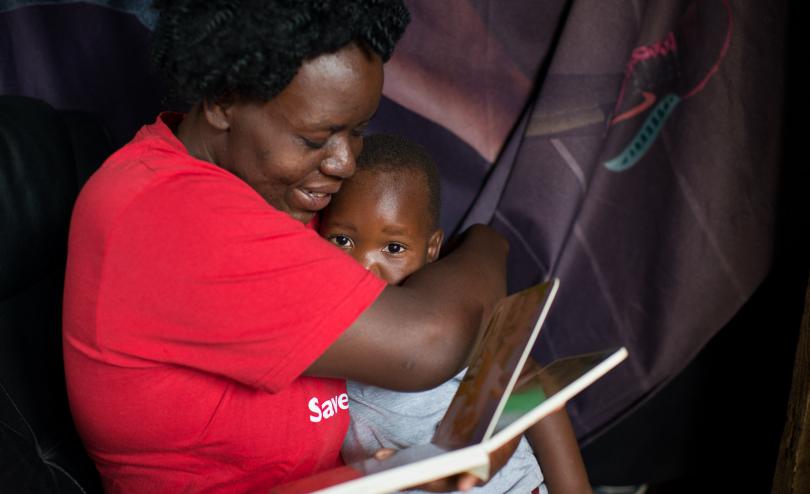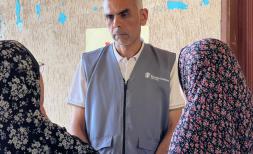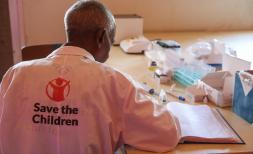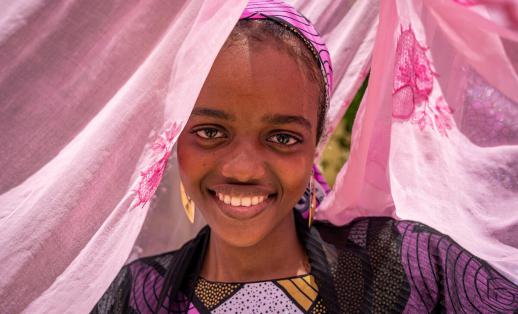When the abuse of children is considered normal

At my small town South African school in the 1980’s, ‘six of the best’ was the ultimate threat. If we stepped out of line, our Principal would call us to his office, select a cane from his desk and whip us six times, after which we had to say ‘thank you, sir’ and return to class.
One of the first acts of the new democratic government under Nelson Mandela was to ban corporal punishment at school. It took another 23 years for the Constitutional Court to ban corporal punishment in the home too. Yet, despite these bans, teachers and parents are still hitting children.
Recently, a grade 3 pupil died after being repeatedly beaten on her head with a hosepipe for not doing her homework. At Save the Children South Africa, we often meet caregivers who continue to physically punish their children at home. This is child abuse, and it’s still normalized.
What is the situation for children?
Corporal punishment is not unique to South Africa – it is a global phenomenon, with 87% of children still living in countries in which it is legally permitted and socially accepted.
This is the most common form of physical and emotional abuse against children worldwide, leading to the injury and death of thousands of children each year.Unbelievably, such violence is seldom considered abuse.
Why is this important?
Take the case of Thembile, who participates in our positive parenting program in South Africa. Thembile was regularly beaten by her parents, and when her own son was born she did the same to him. It became so bad that the only time Thembile really communicated with her son was when she was shouting or beating him.
This was a severe violation of her son’s right to human dignity, physical integrity, healthy development and freedom from cruel, inhuman and degrading treatment.It could also be harmful to his development, affecting a range of health and social outcomes.
When we first met Thembile’s son, Andile, he did not want to sit next to his mother. He was a very quiet child, didn’t smile much, but could be very aggressive with other children. Fortunately, they are making great progress. Thembile is learning how to communicate and show love to Andile, and she realises the value of making time for him. Today, it is normal to see mother and son hugging and laughing together.
In South Africa, and globally, the wide social acceptance of corporal punishment means that a level of violence in bringing up children is normalized, paving the way for other forms of violence and mistreatment. Like too many other children, Andile learned early lessons about using violence to solve problems and dominate others. Yet despite the scale and the damage it causes, there remains a shocking lack of political and financial commitment to end corporal punishment in all settings.
Why act now?
Before the Covid 19 pandemic,well over a billion children experienced corporal punishment every year, and about four in five children were subjected to some kind of violent discipline in the home.[1]
We are now seeing increased risk factors for violence, and added pressure on national budgets and international donors, jeopardizing investments to end corporal punishment.

What is Save the Children calling for?
April 30 marks a new the International Day of Action to End All Corporal Punishment of Children.
As part of building global momentum to end all forms of violence against children (as captured in Sustainable Development Goal 16.2), Save the Children, alongside the End Violence Global Partnership, is encouraging individuals, governments, and organisations to endorse this statement.
By doing so you stand in solidarity with our call on all governments to:
- Prohibit all forms of corporal punishment against children in all settings by 2030 and ensure that national legislation is aligned to international human rights standards.
- Scale up resources for ending violence against children as well as existing parenting and family support interventions by integrating them into government strategies and plans.
- Listen to and involve children: Governments, international agencies and partners must formalize and fund processes to ensure meaningful, safe and active inclusion of children in efforts to end violence. Children are part of the solution!
The story of Thembile and Andile shows how physical punishment of children spans generations, how children learn about violence at the feet and fists of their elders. But this story also shows how we can stop this cycle of violence in our societies, by bringing up children in an environment of love and respect, in which violence has no place.
[1] UNICEF (2014), Hidden in Plain Sight: A statistical analysis of violence against children, NY: UNICEF







